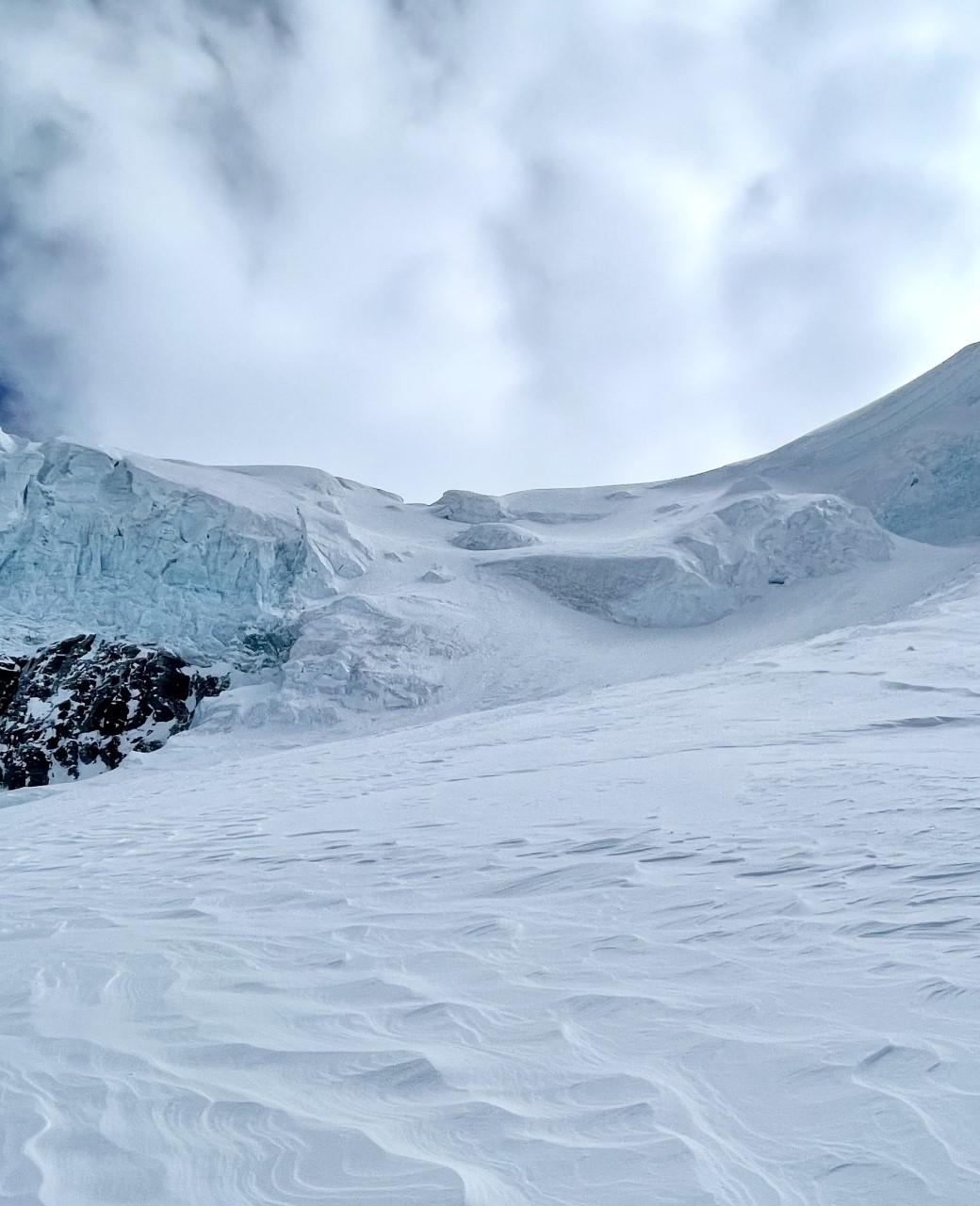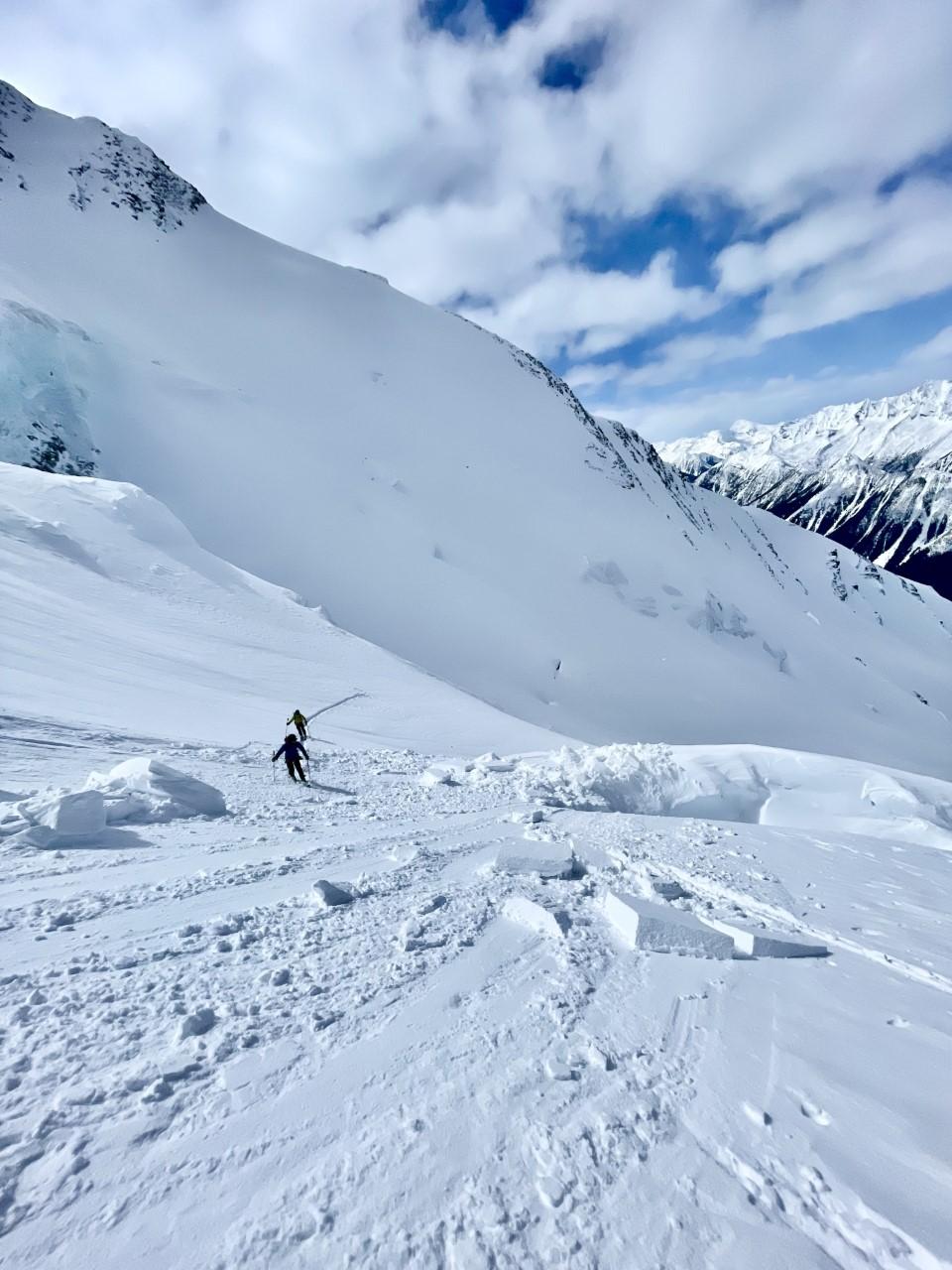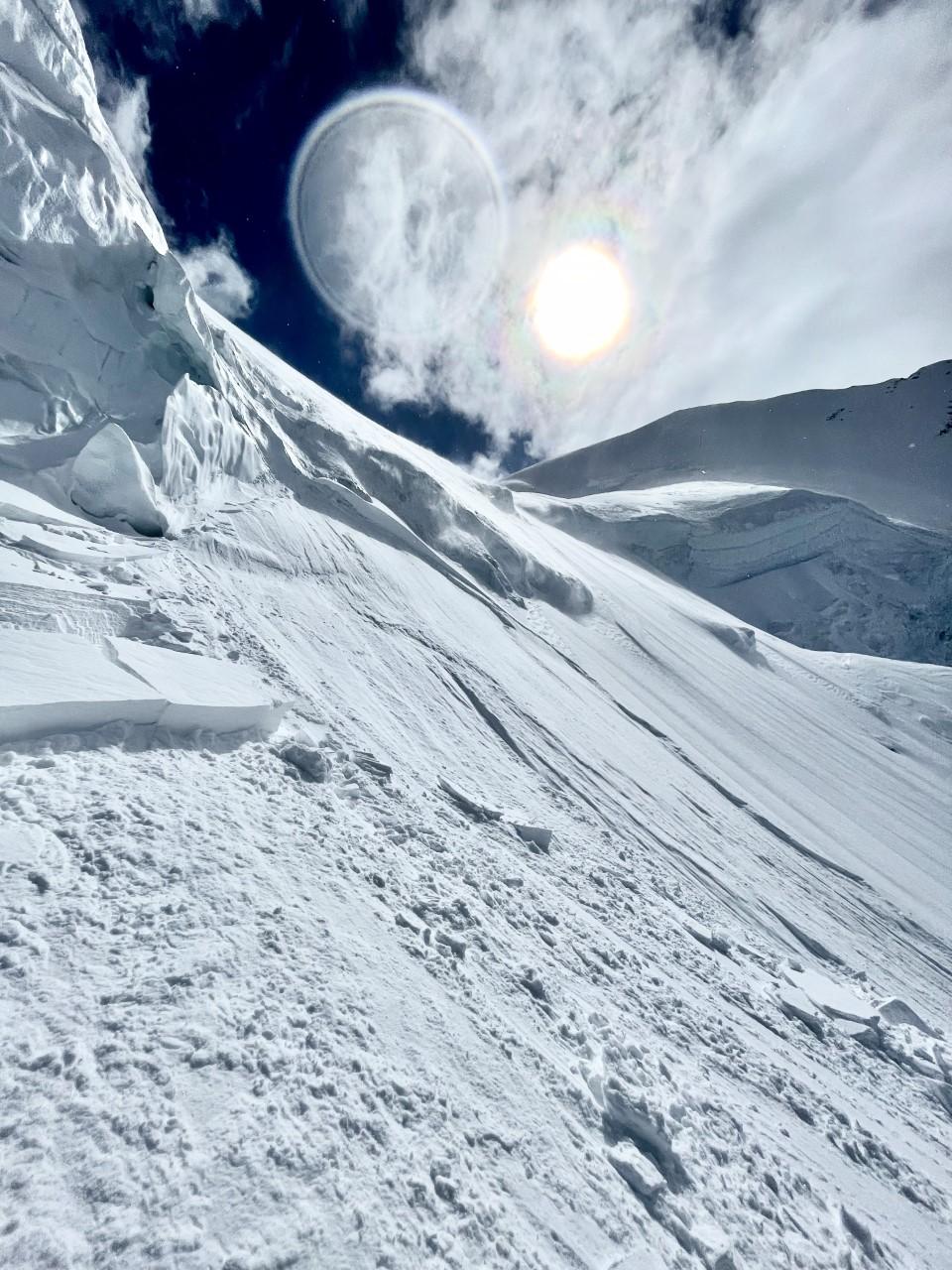For those of you that are still in spring skiing mode (conditions are fantastic btw), I had a close call yesterday I would like to share while ascending out of the North side of Mt. Rogers through the heavily crevassed glacier and serac bands.
It's long, so read on at your own peril...
From valley bottom, leaving the Hermit parking lot, travel was fast on the crust surface to ~2100m (crampons are nice) where the first bit of soft snow was encounter. The East winds (not common in this area) were gusting strong along the ridge tops and swirling about on the Swiss Glacier, sending plums of snow into the atmosphere. From this sight, I was doubtful of reasonable ski conditions on the North side and was actually ready to call it a day and have a nap in the sun. Alas, we decided to continue a bit higher to assess conditions, because 'you don't know until you go'. Thankfully we did, as we found ideal conditions (boot top pow) ascending the South Face of Mt. Rogers and the East winds seemed to taper off slightly, gusts becoming less frequent.
Standing on the top of Mt Rogers and peering down the North side, I couldn't help but feel the excitement grow, we were actually going to make this happen, conditions are good!
And they were, skiing mid boot, soft wind pressed snow down the steep North side, weaving through the bergschrund, crevasses and ice bulges to the basin below in two pitches. A size 1 wind slab was triggered near the bottom on the run next to a crevasse, 20cm deep, 5m wide and running 100m into the basin. The crew was stoked!
Ready to ascend we were faced with steep terrain and two serac ice falls. We opted to tackle the weakness between the two ice falls, through steep broken bulges of ice, taking note of the down flow winds regularly transporting available snow over its rolls. We used a combination of skinning and boot-packing to navigate the terrain, transitioning several times. The snowpack was 3m+ on average with 20cm of ski penetration. I was setting the track in 30+ degree, broken terrain with open crevasses and one of the ice falls below. We were in high consequence terrain with little room for error.
Unroped and spaced out I was about to stop and regroup on a small bench before setting the track across a steep open slope below an ice bulge when I found myself facing downhill, blocks of snow breaking up at my skis, looking down at an open crevasse 15m below. I spun, pancaked myself onto the blocky slab and dug my claws into the bed surface below with the hopes of not finding out what the bottom of that crevasse looked like...
The slab was 5-50cm deep, 20m wide and ran ~70m. The main debris flow aired over the ice fall (10-15m in height) below. My side of the debris disappeared into the crevasse below, I remained on the bed surface, gripped. The remainder of the crew was not involved.
I was shaken but okay, one of my partners took over and led us the rest of the way through the terrain, choosing the line carefully and using ice screws and slings for protection where needed.
This experience served as a good reminder that even in periods of Low Avalanche Hazard and great spring skiing conditions, even a small avalanche could have serious consequences in the 'right' terrain feature. We anticipated pockets of slab to be forming from the winds transporting snow down the, well filled in, glacier and for this reason we remained unroped. By entering high consequence, technical terrain features like this, one assumes a higher level of risk than normal, the likely hood of an incident increases, the room for error narrows and you rely on your experience, judgement and partners to move quickly and safely through the hazards. By nothing more than luck I was only on the edge of the debris flow and not in its center, where I intended to go next...
Choose your partners appropriately, get the necessary training and experience, carry the right equipment, check weather and avalanche conditions regularly and do not be afraid to turn around, the line, almost certainly, will be there next time.
Enjoy the remainder of the ski season, whenever that may finish for you!
Mark Herbison
Parks Canada Mountain Rescue and Avalanche Control / Forecaster
IFMGA / ACMG Mtn Guide




